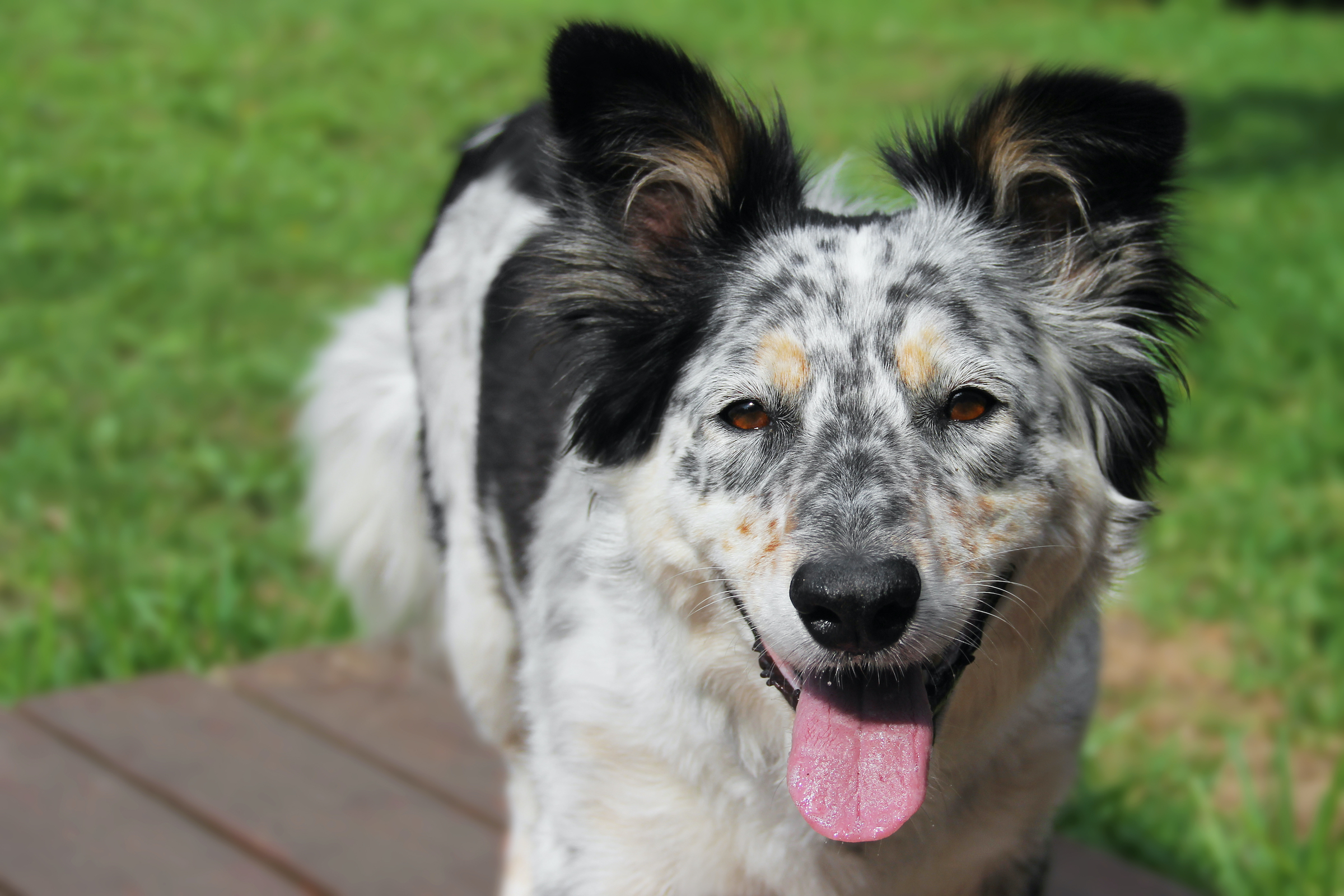Most of us understand that our dogs don’t really sweat, and so they need other ways to cool down. That means they pant from being too warm, instead of dripping like us humans do. But that’s not the only reason you might see your pup’s tongue out and their breathing quicken.
Dogs pant when hot, stressed, thirsty, in pain, or because of certain medical conditions. When you want to help your pet stop panting, you may have to try a few things before one of them sticks. Here are nine tricks for how to calm a panting dog.
How to calm a panting dog

Because there isn’t just one explanation, you might need to run through a couple of these before your pooch stops lolling their tongue. You can also use situational cues — if you’ve just been on a walk and it’s hot out, that tells you they probably just need a minute to cool down. Go through this list to narrow it down.
Help them cool off
Dogs pant in hot weather — it’s just one of their things. You don’t have to worry too much if your pup pup gets hot a little now and then, but you certainly don’t want them to wind up with heatstroke. That means it’s important to give them a way to lower their temp quickly. One option in summer: Provide access to a pool or stream if they like to take a dip after a long walk or throw them a couple of ice cubes to play with.
Keep them close
On the other hand, panting sometimes stems from emotional issues, namely anxiety. When your beastie feels stressed, stay close by and provide the comfort of your presence. You want to be careful not to overdo it though, as then your dog won’t know how to self-soothe.
Find some shade
When you aren’t home or don’t have a handy creek nearby, some nice shade will do the trick. The important part here is to make sure Fido has a spot out of the sun where they can relax a little until their body gets back to where it needs to be. Depending on the weather, a couple of minutes will do the trick.
Provide a drink
Really, you should do this all the time. Dogs need water to drink consistently or they can suffer dehydration (and even get very sick). Check your bud’s bowl after walks and on hot days, especially since they’ll likely lap it up quickly on particularly warm afternoons and need extra refills.
Move to a calm location
An anxious canine doesn’t just need you, but also space from whatever has overwhelmed them. If they get spooked by a crowd, they need some alone time to calm themself (and lots of dogs never really warm up to big groups).

Give pheromone therapy a try
Dog-appealing pheromones use natural scents of lactating females, which makes our furry friends calm down and feel safe. You can get sprays, collars, or diffusers to plug into the wall. That can especially assist an animal that has separation anxiety when they have to stay home by themself.
Put on an anti-anxiety garment
Some dogs like to feel squeezed, like a perpetual hug, and will enjoy the sensation of a ThunderShirt or similar outfit. Try this out sometime when they don’t feel bad to help them get used to it. Then throw it on when they pant and see if it mellows them a bit.
Get some supplements
Many natural supplements will give him a little bit of relaxation, including valerian, CBD, or L-theanine. Don’t jump to these before speaking with your vet, especially for dogs on other prescription medications. When used correctly, these supplements lower cortisol levels, which helps them settle.
Talk to your vet
We put this last, but it’s actually the most important. You don’t want to do anything until you confirm that the panting doesn’t stem from a deeper medical issue. A dog that pants excessively, suddenly, or for no obvious reason may need to see a doctor urgently as it could signal something emergent. However, it could also just mean their hormones have shifted out of whack.
No matter the cause, you want to help your buddy when they pant. Most of the time, it just means they’re hot or nervous, but occasionally, it can be a symptom of a bigger problem. Giving all of these tricks a shot will help you discover exactly what’s happening and get your pup pup back to normal in no time.




